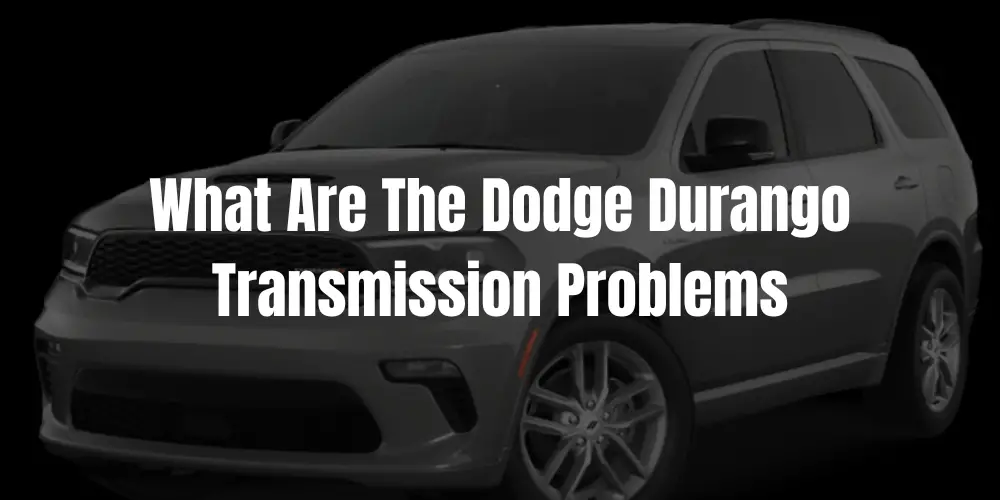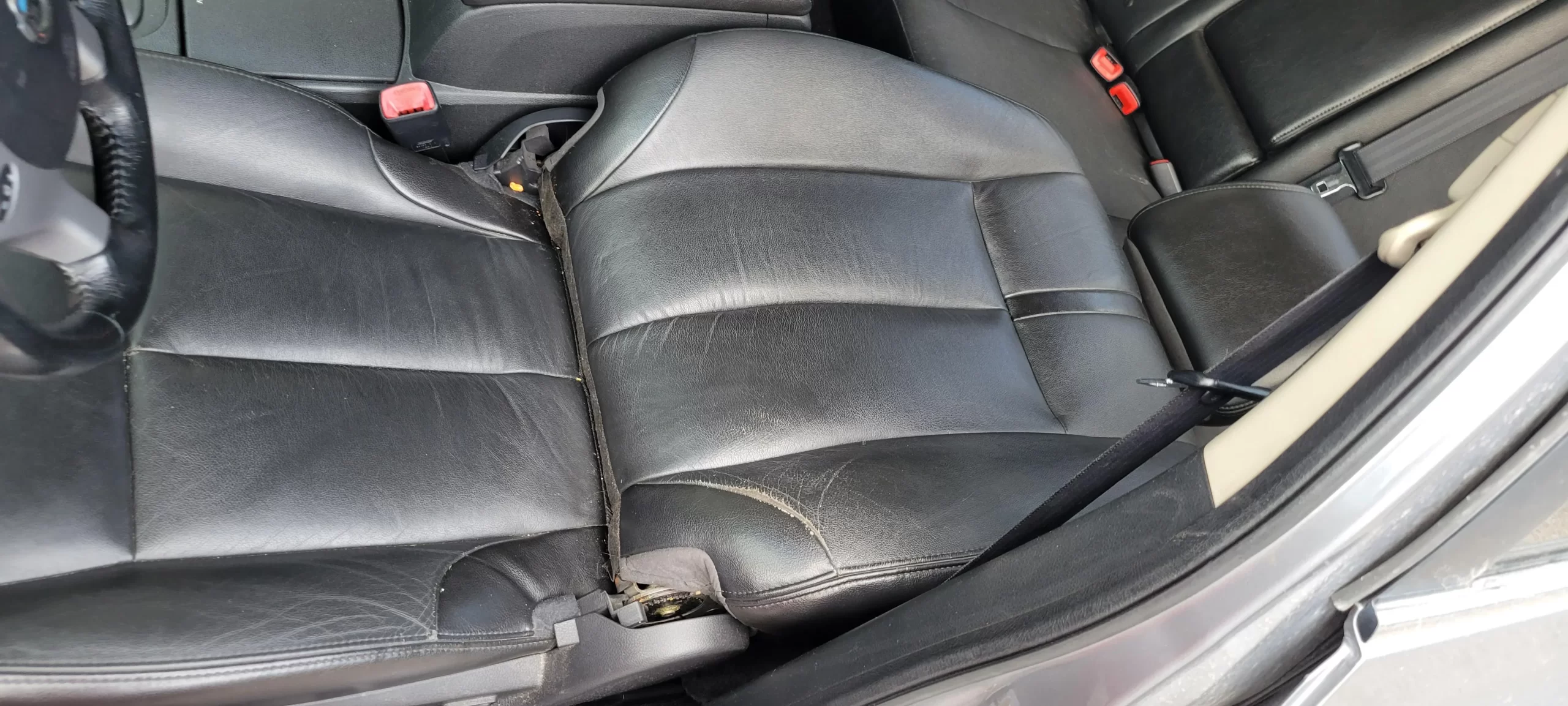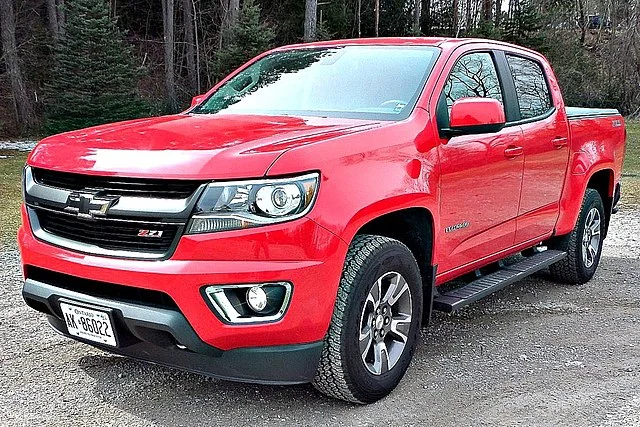If you own a Dodge Durango, you may have experienced some transmission problems that affect the performance and safety of your vehicle.
Transmission problems can range from rough shifting, slipping gears, and delayed or harsh shifting, to complete transmission failure.
In this article, we will explore the common Dodge Durango transmission problems, their causes, symptoms, and solutions.
We will also discuss the different types of transmissions that have been used in the Dodge Durango over the years, and how to maintain them properly.
By the end of this article, you will have a better understanding of the Dodge Durango transmission problems and how to fix them.
What Are The Dodge Durango Transmission Problems
1. Rough Shifting
One of the most common transmission problems reported by Dodge Durango owners is rough shifting. This can manifest as jerky or jolting movements when changing gears, which can be both uncomfortable and potentially damaging to the transmission system.
2. Slipping Gears
Another prevalent issue is the transmission slipping out of gear, causing a momentary loss of power and acceleration. This can be particularly dangerous when driving at high speeds or navigating steep terrain, as it compromises the vehicle’s ability to maintain control.
3. Delayed or Harsh Shifting
Some Durango owners have reported experiencing delayed or harsh shifting, where the transmission hesitates before engaging or shifts abruptly, leading to a rough and unsettling driving experience.
4. Complete Transmission Failure
In the most severe cases, Dodge Durango transmissions may fail, rendering the vehicle inoperable and necessitating costly repairs or replacements.
Also Read: P1391 Dodge Ram 1500: Causes & Quickest Ways To Fix The Error!
What Are The Root Causes Of Dodge Durango Transmission Problems?
The causes of transmission problems in Dodge Durango vehicles can vary widely, but some common culprits include:
-
Mechanical Malfunctions
Wear and tear on transmission components, such as gears, clutches, and seals, can lead to malfunctions and performance issues over time.
-
Fluid Degradation
Insufficient or contaminated transmission fluid can impair lubrication and cooling functions, leading to increased friction, heat buildup, and ultimately, transmission failure.
-
Electronic Control Module (ECM) Issues
Problems with the ECM, which regulates transmission operation, can disrupt communication between the engine and transmission systems, resulting in erratic shifting and other performance issues.
What Are The Symptoms Of Dodge Durango Transmission Problems?
To identify potential transmission problems in your Dodge Durango, be on the lookout for the following symptoms:
- Unusual noises: Grinding, whining, or clunking noises during gear shifts may indicate underlying transmission issues.
- Burning smell: A burning odor emanating from the transmission fluid could signal overheating or fluid degradation.
- Fluid leaks: Puddles or stains beneath the vehicle may indicate a transmission fluid leak, which should be addressed promptly to prevent further damage.
- Dashboard warning lights: Illumination of the “Check Engine” or “Transmission Overheat” warning lights should not be ignored, as they may indicate serious transmission problems.
What Are The Solutions To Dodge Durango Transmission Problems?
If you’re experiencing transmission problems in your Dodge Durango, consider the following solutions:
- Regular Maintenance: Follow the manufacturer’s recommended maintenance schedule for transmission fluid changes, filter replacements, and inspections to keep your transmission in top condition.
- Fluid Checks: Monitor transmission fluid levels and quality regularly, topping up or replacing fluid as needed to ensure proper lubrication and cooling.
- Professional Inspection: If you suspect transmission issues, consult a qualified mechanic or transmission specialist for a thorough diagnosis and repair plan.
- Software Updates: In some cases, updating the vehicle’s ECM software can resolve electronic control issues and improve transmission performance.
What Transmission Does A Dodge Durango Have?
A Dodge Durango is a mid-size SUV that has been produced by Dodge since 1997.
The transmission is the part of the vehicle that transfers the engine’s power to the wheels.
Depending on the model year and engine type, a Dodge Durango can have different transmissions.
Here is a summary of the transmissions used in each generation of the Dodge Durango:
- First generation (1997-2003): 4-speed A518 TorqueFlite automatic, 4-speed 45RFE automatic, or 5-speed 545RFE automatic.
- Second generation (2004-2009): 4-speed 42RLE automatic, 5-speed 545RFE automatic, or CVT Two-Mode automatic.
- Third generation (2010-present): 5-speed W5A580 automatic, 5-speed 545RFE automatic, 6-speed 65RFE automatic, 8-speed 845RE automatic, or 8-speed 8HP70 automatic.
How Much Does It Cost To Replace A Transmission In A Dodge Durango?
The cost of replacing a transmission in a Dodge Durango can vary depending on the model year, engine type, transmission type, and the service center you choose.
The average cost of a transmission replacement for a Dodge Durango can be anywhere between $3,000 and $4,000, with the average price of replacement sitting at $3,500.
This includes the cost of the parts and the labor. However, this is only an estimate and the actual cost may differ based on your specific situation and location.
How Long Do Dodge Transmissions Last?

There is no definitive answer to how long Dodge transmissions last, as it depends on various factors such as the model, the engine, the driving conditions, the maintenance, and the individual use.
However, some web sources provide some estimates based on their experience and research. According to them, the Dodge Ram 1500 transmission, which is one of the most popular Dodge trucks, can last between 150,000 and 300,000 miles or even more.
However, some users have reported transmission problems with less than 20,000 miles. The ZF 8-speed transmission, which is used in newer Dodge models, is considered to be one of the best transmissions on the market, but it also requires regular fluid changes and filter replacements to ensure its longevity.
Is Dodge Durango A Reliable Car?
The Dodge Durango is not a very reliable car. It has a history of problems with its in-car electronics, engine, transmission, and body hardware. Consumer Reports gave it a low score for predicted reliability and owner satisfaction. The Dodge Journey, another SUV from the same brand, also has low-reliability ratings. Therefore, you might want to consider other options if you are looking for a dependable vehicle.
How Many Gears Does A Durango Have?
The Dodge Durango is an SUV that has an automatic transmission with eight gears. You can shift the gears manually using the gear shifter in the center console. However, some owners have reported problems with the Durango not shifting gears properly or smoothly.
Important: What Are The Common 2012 Dodge Ram Radio Problems?
How Much Is A New Transmission For A Dodge?
The typical Dodge transmission repair cost ranges from $300 to $10,000. A simple transmission fluid flush will cost about $300, whereas a complete transmission replacement with a brand-new part can cost up to $10,000.
FAQs
How to diagnose Dodge Durango transmission problems?
To diagnose Dodge Durango transmission problems, you can:
– Check the transmission fluid level, color, and smell. The fluid should be at the proper level, red or pink in color, and not have a burnt or foul odor.
– Scan the vehicle for any trouble codes using an OBD-II scanner. The codes can indicate the source of the problem and help you narrow down the diagnosis.
– Perform a transmission pressure test using a gauge and a service manual. The pressure test can measure the hydraulic pressure in the transmission and reveal any internal leaks or blockages.
– Inspect the transmission components for any signs of wear, damage, or corrosion. You may need to remove the transmission pan, valve body, or other parts to access them.
How much does it cost to fix Dodge Durango transmission problems?
The cost to fix Dodge Durango transmission problems can vary depending on the type and extent of the problem, the parts and labor involved, and the location and shop you choose. However, here are some average estimates results are:
– Transmission fluid change or flush: $100 – $300
– Shift cable or linkage replacement or adjustment: $50 – $250
– Transmission solenoid replacement: $150 – $400
– Transmission sensor replacement: $100 – $300
– Transmission control module (TCM) update or reprogram: $200 – $600
– Transmission rebuild: $1,500 – $3,000
– Transmission replacement: $2,000 – $4,000
What are the best transmission fluids for Dodge Durango?
The best transmission fluids for Dodge Durango are the ones that meet or exceed the manufacturer’s specifications and recommendations. You can find the specific type and amount of transmission fluid for your Dodge Durango in the owner’s manual or on the dipstick. However, based on the web search results[^1^][1], some of the common transmission fluids for Dodge Durango are:
– ATF+4 for 4-speed and 5-speed automatic transmissions
– Mopar CVTF+4 for CVT Two-Mode automatic transmission
– Mopar ZF 8&9 Speed ATF for 8-speed automatic transmission
How to check the transmission fluid level in Dodge Durango?
To check the transmission fluid level in Dodge Durango, you can follow these steps:
– Park the vehicle on a level surface and apply the parking brake
– Start the engine and let it run until it reaches the normal operating temperature
– Shift the transmission through all the gears and then return to the park or neutral position
– Locate the transmission dipstick under the hood and pull it out
– Wipe the dipstick with a clean cloth and reinsert it fully
– Pull the dipstick out again and read the fluid level. It should be between the hot marks or in the crosshatched area
– If the fluid level is low, add the appropriate type and amount of fluid through the dipstick tube
– If the fluid level is high, drain some fluid or have it checked by a professional
How to change the transmission fluid and filter in a Dodge Durango?
To change the transmission fluid and filter in Dodge Durango, you can follow these steps:
– Raise the vehicle and support it securely with jack stands
– Place a drain pan under the transmission pan and remove the drain plug or loosen the pan bolts to drain the fluid
– Remove the transmission pan and gasket and clean them with a solvent
– Remove the old transmission filter and O-ring and install the new ones
– Install the new transmission pan gasket and pan and tighten the bolts to the specified torque
– Lower the vehicle and refill the transmission with the recommended type and amount of fluid
– Start the engine and check for leaks and proper operation
How to prevent Dodge Durango transmission problems?
To prevent Dodge Durango transmission problems, you can:
– Follow the manufacturer’s recommended maintenance schedule and service intervals
– Use the correct type and quality of transmission fluid and filter
– Check the transmission fluid level and condition regularly and change or flush it when needed
– Avoid driving habits that can cause excessive wear or stress on the transmission, such as towing heavy
Conclusion
Dodge Durango transmission problems can affect your vehicle’s performance and safety.
They can be caused by various factors, such as fluid, components, cables, TCM, or failures.
To diagnose and fix them, you may need to check, scan, test, inspect, or replace the transmission.
The cost and lifespan of the transmission depend on the problem, the parts, the labor, and the shop.
To prevent them, you should follow the maintenance schedule, use the correct fluid and filter, check the fluid regularly, and avoid driving habits that can wear the transmission.
By doing so, you can enjoy a smooth and safe ride with your Dodge Durango.




